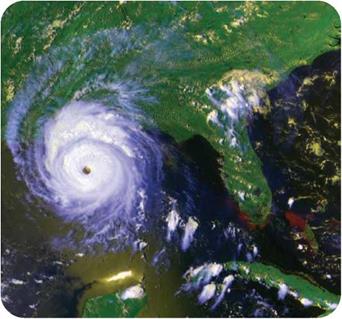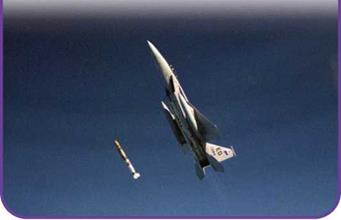ASAT MISSILE SYSTEMS
The United States and the Soviet Union tested anti-satellite (ASAT) missile systems back in the 1980s. In 1985, a U. S. F-15 fighter fired a missile that flew into space and destroyed a U. S. solar observatory satellite orbiting 375 miles (600 kilometers) from Earth. After this one success, the ASAT project was abandoned, partly because of concerns that such missiles violated the 1967 Outer Space Treaty. The treaty requires nations to refrain from placing weapons into space-such as nuclear warheads, lasers, and other high – energy weapons-that could be used to destroy satellites or aimed at ground targets. In 2007, China claimed to have test-fired a missile that destroyed an obsolete weather satellite, raising a new debate about ASAT usage. As increasing numbers of satellites are launched, the question of how to regulate ASAT systems remains unresolved.
|
О This ASAT missile was successfully released to destroy a satellite during a 1985 test.
|
 in wilderness and cities. Space cameras provide images from which mapmakers create accurate maps. They even can give computer users instant images of their own location over the Internet.
in wilderness and cities. Space cameras provide images from which mapmakers create accurate maps. They even can give computer users instant images of their own location over the Internet.
Weather satellites have revolutionized meteorology. They provide the daily TV weather images, and they alert forecasters to developing global weather situations, such as hurricanes. The National Oceanic and Atmospheric Administration (NOAA) runs a national weather service from satellite data provided by the National Environmental Satellite Data and Information Service.
Short-range weather forecasting uses data from geostationary operational environmental satellites (GOES). Long – range weather forecasts use data from polar-orbiting operational environmental satellites (POES). NOAA also operates a search-and-rescue satellite-aided tracking system, known as SARSAT,
which can locate a person in trouble at almost any location on the planet.











